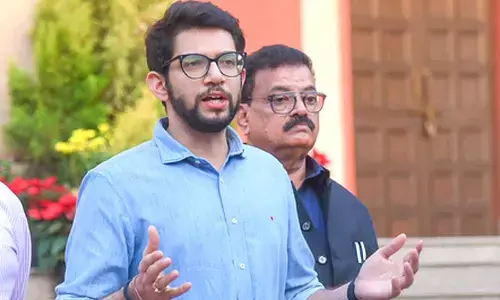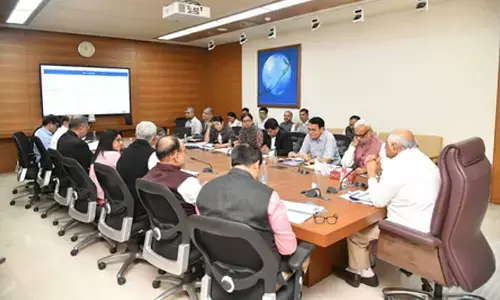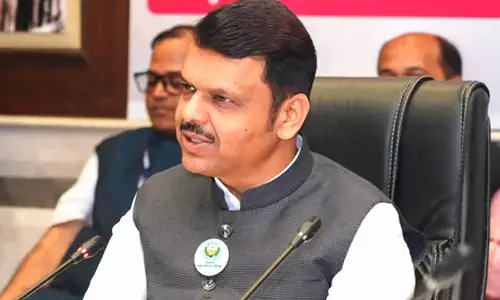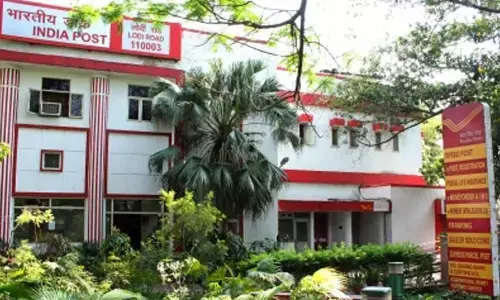Police remain ‘prime movers’ of India’s criminal justice system: Amod Kanth
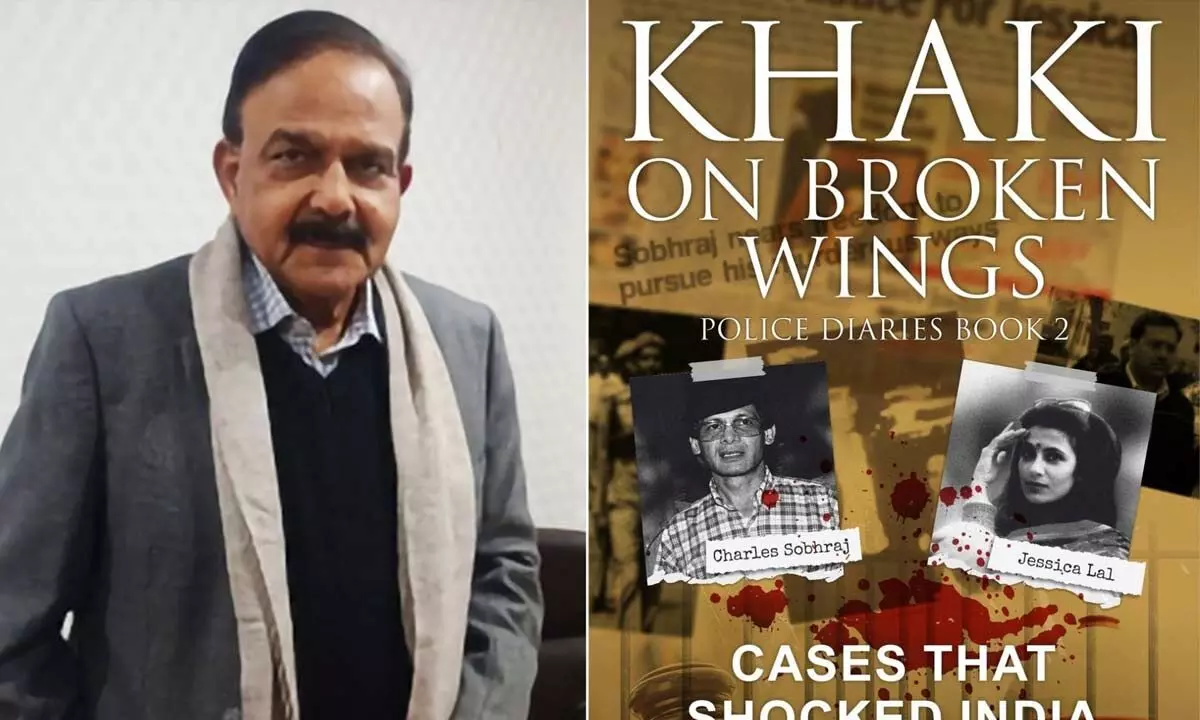
Amod Kanth and his latest book
His latest book ‘Khaki on Broken Wings: Police Diaries Book 2: Cases That Shocked India’, published by Bloomsbury, hit the stands recently.
Investigating several high-profile cases like Jessica Lal’s murder, Sanjeev Nanda BMW hit & run, Charles Sobhraj’s escape from Tihar Jail, among others, gave Amod K. Kanth, former Director General of Police, an opportunity to delve deep into the criminal justice system and find out how the rich and powerful could play with it and get away with impunity.
His latest book ‘Khaki on Broken Wings: Police Diaries Book 2: Cases That Shocked India’, published by Bloomsbury, hit the stands recently.
Excerpts from an interview:
Jonathan Swift once said, “Laws are like cobwebs, which may catch small flies, but let wasps and hornets break through”. What is your opinion on this with respect to the criminal justice system in India?
India’s criminal justice system (CJS) is tailor-made for the rich and powerful; it is essentially meant for those who may buy off its processes and components or browbeat the stakeholders. While the system deals with crimes and justice it is constituted by the lawyers as Prosecutors, defenders, and presenters of the offenders, victims, and witnesses; the judiciary consists of the magistrates, judges, and multiple types of functionaries who decide or give the judicial verdicts; and those who run the jails and the so-called correctional systems.
In my 34 years of hardcore law-enforcement career, I have found the Indian police to be all over, the omnipresent and the most visible, albeit much maligned among the government functionaries performing all types of duties, legal and extra-legal, the overarching ‘Khaki on the Broken Wings’ of the CJS.
At the highest levels in the country, there appears to be a serious concern about the ailments that afflict our justice delivery system, which is evident from a recent statement by the Chief Justice of India, D.Y. Chandrachud, who made a distinction between law and justice, expressing anguish about the laws themselves becoming the instruments of oppression.
Police system is the prime mover of CJS that first comes into the picture when dealing with cognisable offences. Do you think PS has been by and large effective in discharging its duties diligently? Does the Police System do its work in a scientific and technically proven manner so as to build a watertight case?
Although there are several law enforcement agencies in the country, other than the police, who are making waves and headlines, the Indian Police in its myriad State, Union Territories, and Central Government level formations-from 16000 police stations to the highest central police organisations like the CBI (Central Bureau of Investigation) and NIA (National Investigation Agency), decidedly remain the ‘prime movers’ of India’s CJS.
Strictly speaking, under the Code of Criminal Procedure (CrPC) 1973, the designated and empowered police officers are supposed to register the FIR, investigate a cognizable offence, arrest a person, and undertake other legal actions to take the FIR to its logical conclusion of submitting the Final Report to the court of jurisdiction.
But, in practice, directly saddled with the myriad legal responsibilities concerning the maintenance of law and order, securities, regulations, and the overall enforcement of laws and processes, the distinctions between the so-called cognisable and non-cognisable offences (offences in which the police officer has no authority to arrest without warrant) get blurred, and the Indian Police finds itself performing duties almost everywhere. Despite serious legal infirmities, inadequacies of manpower, resources, forensic and technical limitations, and the ‘endless mutinies’ always in hand within India’s vibrant and boiling democracy, the 2.5 million policemen for 1.40 billion population aren’t doing so badly in discharging their duties.
In the Jessica Lal murder case, one realized how deep the networking ties of the Page 3 crowd run that even higher officials from the Police make a beeline for these parties. Do you think this kind of hobnobbing adds impetus to the mighty rich to commit a crime and also get away with it?
Some of the cases which I happened to investigate and closely supervise, like, the Jessica Lal murder, Sanjeev Nanda BMW Hit & Run, Charles Sobhraj Tihar Escape, and the maverick mafia Romesh Sharma’s cases, gave me an opportunity to go deep into the criminal justice system and I was aghast to find how the rich and powerful could play with the system and get away with impunity.
Each one of these cases, and many more that I handled during my police career in Delhi, Goa, Pondicherry, Arunachal Pradesh, and most significantly in the CBI, confronted me with the harsh realities of the loopholes in the laws and the systemic privileges given to the mighty and rich and the denial of justice to the poor, helpless and deprived in huge proportions.
The much-talked-about Jessica Lal murder case was unique and a landmark in many ways. No other criminal case in the country so prominently exposed the page-3 socialites of the metropolitan cities like Delhi and Mumbai as the hundreds of them making a beeline at an illegal joint, including the well-known persons in the business-particularly in the show-biz, professionals, even top-cop, who all turned out to be hollow-men of straw.
The South Delhi Police team carried out an excellent investigation in lightning speed identifying the main accused Manu Sharma, son of a top politician, and others while collecting highly convincing evidence, but 35 witnesses, including several very well-placed ones, were bought- over and turned hostile. All accused were let off in a superficial judgment.
Outcries like ‘No One Killed Jessica’ led to national-level campaigns with candlelight demonstrations and strong demands for change in the law etc. that moved the government and generated unprecedented debates in the media. Based on the same evidence that we had collected earlier, as per the law, we filed the appeal in the Delhi High Court followed by arguments by the legal luminaries on both sides, resulting in the conviction of the killer and his life sentence.
Last year in December, Charles Sobhraj was released from Kathmandu prison two years ahead of his full sentence of 20 years. How did Charles time and again give slip to the law? You mentioned in your book that David Richard Hall started “singing” and made some “cathartic” disclosure. What made you think that David would hold the key to Sobhraj’s modus-operandi of grand escape?
An inveterate Jail-bird, counting from his early youth when he went to jail in Paris, Charles Sobhraj served in the jails for more than 42 years, the latest being the Kathmandu prison where he spent nearly 19 years before his premature release on health ground. Perhaps, it was for the first time that Charles, who had turned 79, did not cheat the jail authorities. Since Charles’ cardiac surgeon himself wrote all about him, we have to believe that he had to undergo open-heart surgery in Nepal.
Earlier, he was able to dupe the police and jail officials all his life in India and other countries across the globe. Among the two longest spells of incarceration in Asia’s largest and arguably the most talked-about Prison Tihar Jail, he spent nearly 10 years from 1976 to 1986-when he engineered perhaps the most devious and meticulously planned jail escape.
He conspired to escape from the jail with half-a-dozen other dreaded criminals by drugging all on duty, from the jail to the police guards on the gate, his prime co-conspirator being David Richard Hall, a creative director who had been arrested in a drugs case and got released by Charles through a false medical certificate and his clout in the jail and in the judicial process.
Charles had planned his escape at a time when he was almost being released to get into another prolonged jail sentence, from 1986 to 1997, in order to avoid a death sentence in Thailand, as he apprehended, coming through the Interpol Red Corner Notice that was to lapse during that period. It was David Hall, an emotional person deeply attached to his wife, who gave out all the minute details about Charles when I shared with him my homemade lunch prepared by my wife. David, who was not eating at all for a couple of days, cried and started ‘singing’ for hours together, disclosing all the facts which couldn’t be known otherwise.
Indian prisons today are bursting at the seams with millions of undertrials awaiting hearings. Do Police often-times act under political pressure to catch offenders without sufficient evidence against them? In your long and illustrious career as a law enforcer, what changes did you try to bring in?
It’s a very sad story that 76 per cent of nearly half a million prison inmates and custodial detainees in India happen to be under-trial prisoners. The majority of these prisoners, possibly about 75 per cent of them, might never be convicted since the courts will not pronounce them guilty. Going by the basic jurisprudence espoused within the Indian Constitution and the legal system that we follow a person is deemed to be ‘innocent until proven guilty’, grave injustice is being caused to these undertrials in the country’s most complicated CJS.
Political pressure is just one of the many forms of pressure that the police officers investigating crimes have to face while they decide to arrest, investigate or prosecute a person who is accused of a crime. Most of the time, the arrest or detention of any person suspected of having committed an offense takes place right in the beginning of the investigation without collecting any cogent evidence to justify his or her detention, rather on some pretext or other the custodial interrogation becomes the ground for arrest or detention.
There are numerous changes in the laws and the rulings handed down to the investigators which prohibit them from arrests in the majority of cases, but these laws and court rulings are routinely flouted. Legally speaking, it is obligatory on the part of the Prosecution, judiciary, and the police investigating officers to follow these legal provisions and dictates-the senior police officers must adhere to them instead of taking short-cut routes to control crimes and maintain law and order.
The soul of CJS is the concept of ‘proof beyond reasonable doubt’. In your active service while investigating some of the most sensational cases, how meticulously you and your team were in gathering evidence to corroborate the charge sheet against the offenders?
In the given framework of the CrPC and the Evidence Act, collecting ‘admissible’ evidence that can be judicially relied upon by the court to prove a case beyond reasonable doubt may itself be a tall order in a large number of cases. By denying the judicial credibility to a major part of oral and circumstantial evidence collected directly by the police which forms the crux of any investigation a situation is created wherein the falsehood becomes the order of the entire process.
The FIR being an admissible document though recorded by the police, many times, acquires a concoction on which false cases are built creating inherent weaknesses that destroy the entire process. During these times when such cases and false encounters are becoming the order of the day, I look back to the numerous cases I had the opportunity to investigate or supervise.
My two volumes of police memoirs -- ‘Khaki in Dust Storm’ and ‘Khaki on Broken Wings’ -- I have preferred to call them ‘Police Diaries’ since they contain completely evidence-based factual and truthful accounts of the investigations and trials.
Except for the Transistor Bomb Blast cases of the post-1984 riots terrorist strikes which killed over 85 persons and left over 150 injured, in most of the other cases we succeeded on account of the meticulously collected evidence based upon the existing laws.
To name a few, Lalit Maken, Arjun Das, General A.S. Vaidya and Rajiv Gandhi assassinations, besides Jessia Lal, BMW, Romesh Sharma, and Charles Sobhraj cases - all of them finally succeeded in the courts despite serious challenges and extraordinary pressures, thus establishing the people’s faith in the Rule of Law.
Lastly, you have emphasised much about CJS being archaic and colonial and therefore in need of radical reforms. Where to start with it and who will bring that change?
India’s CJS is confronted with a peculiar dilemma in having two different types of laws co-existing in the same legal system, which appear to be diametrically opposed to each other. On the one hand, we have the basic architecture within the troika of criminal laws, namely, Cr.PC, IPC, and the Evidence Act along with the Indian Police Act of 1861, which were the by-product of the 1857 Revolt against the British rule or India’s First War of Independence.
The British Crown took over from the East India Company and created these laws to bring India into their perpetual subjugation. Somehow, this anti-people, colonial, and alien legal structure has mostly survived and got handed over to the post-Independence governments run by the powers that be.
On the other side, conforming to the articles and spirit of India’s Constitution - our dream document which is acquiring more and more significance with the passage of time - there are numerous social legislations to protect the deprived, poor and needy, the vulnerable children, women, elderly and the specially-abled. One of the biggest problems today is not the absence of progressive laws in India, but their lack of implementation within the given structure and mindset.
During my 34 years of association with the social and voluntary sector alongside the police, which I served for about the same period, I realised that without changing the basic architecture of the CJS, it would be extremely difficult to serve the needs of those people in the country who deserve them the most.









